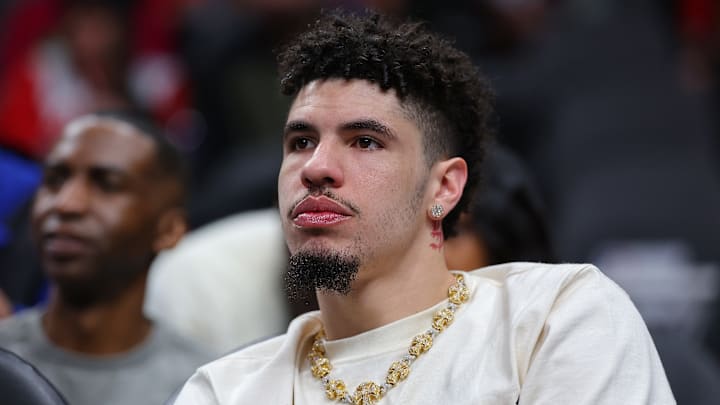Following a breakout All-Star campaign in 2022, Charlotte Hornets guard LaMelo Ball has played in just 58 games over the past two seasons due to recurrent ankle injuries. Last season, with Ball sidelined for 60 games, the team saw their 2023 second-overall pick, Brandon Miller, blossom, scoring 17.3 points per game on efficient shooting.
A common rhetoric in sports discourse is that the best ability is availability. Miller’s ahead-of-schedule ascent, while missing just eight games, has led to growing concern within the Hornets’ fan community about Ball’s injury history.
In July 2023, Ball signed a five-year extension worth up to $260 million. With Miller’s budding potential as a franchise-caliber player, a pressing question has emerged in the community: should the Hornets trade Ball while his value is still high?
Since their inception, the Hornets have been plagued with high draft selections either not meeting expectations or wanting to move to bigger markets or contending teams. For possibly the first time in their history, the organization possesses two young, legitimate star-caliber players. Instead of considering trading Ball, despite his recent injuries, the Hornets should continue to develop him as a franchise cornerstone.
Entering his fifth season in 2024-25, Ball is just 22 years old. He is the same age or younger than Chet Holmgren, Jaime Jaquez Jr., and Trayce Jackson Davis, all rookies in 2023. His All-Star selection in 2022 made him the fourth youngest player ever to receive the honor, behind only Kobe Bryant, LeBron James, and Magic Johnson.
Anthony Edwards, picked two spots ahead of Ball in the 2020 NBA Draft, has become recognized as a bona fide superstar and potentially the next face of the league after leading the Timberwolves to a deep playoff run. Before Ball’s injury troubles, there were genuine debates about whether Minnesota should have chosen Ball with the first overall pick.
There is no denying that, when on the court, Ball impacts the game as a dynamic playmaker and scorer. In his 22 games played last season, Ball averaged 23.9 points, 8.0 assists, 5.1 rebounds, and 1.8 steals. More importantly, the team won 46 percent of its games with Ball on the floor, compared to 30.4 percent without him. The only thing holding Ball back from taking a similar leap to Edwards is his availability.
The idea of moving on from a young and talented but injury-prone player is, unfortunately, supported by NBA history. Stars like Derrick Rose, Brandon Roy, and Grant Hill all had their true career potentials hindered by recurring injuries. However, one notable example of recovery suggests that these concerns might not be as drastic as they appear. Stephen Curry suffered similar ankle injuries early in his career, undergoing two surgeries on the same ankle in his first three seasons with the Warriors. While Ball has progressed his play each season despite limited action, Curry actually regressed with recurrent injuries, averaging a career-low 14.7 points in just 26 games in the 2011-12 season.
Four seasons later, in 2016, Curry was named the NBA’s Most Valuable Player for the second consecutive season. Today, Curry is a four-time champion, the NBA’s all-time three-point leader, and is regarded as one of the best to ever play the game.
Because of Ball’s tremendous upside, his age, and the abilities he’s shown when playing, Hornets fans should pump the brakes on trade talks. Instead, they should revel in having two star-caliber players under the age of 23, solid veteran additions, a revamped executive group, and a highly touted head coach.
